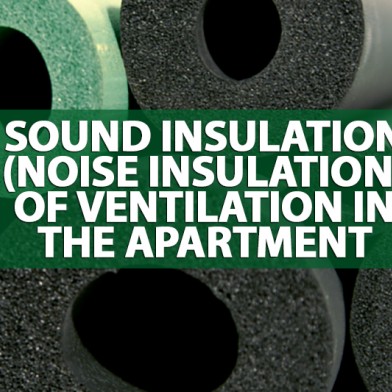Your shopping cart is empty!
Sound insulation (noise insulation) of ventilation in the apartment
- 23 September 2020 18:47:52
- Reviews: 0
- Views: 669
-

Before proceeding to discuss the issue of sound insulation (sound insulation) of ventilation in an apartment, it is necessary to figure out what kind of noise the ventilation system emits, because the choice of those methods and materials that ensure their neutralization depends on this. So, ventilation noises are:
- Air. They appear directly from the fact that a large amount of air masses passes through the ventilation channels. And the higher the speed of their movement, the greater the noise. Similarly, with the volume of masses.
- Vibrating. Such noises arise due to poor-quality fastening of ventilation ducts in the places of their fastening or due to poor-quality assembly of the ventilation system. Over time, when a large amount of air flows through the system, fasteners can become loose and vibrate.
- Generating. Similar noises are also emitted by the flow of air masses, however, their distinctive feature is that generating noises occur, as a rule, in ventilation systems of complex design (in particular, with a large number of turns and transitions).

In order to perform high-quality sound insulation (noise insulation) of ventilation in an apartment, it is necessary to approach this issue comprehensively. In particular, the approach involves three main steps:
- Proper system design. Ideally, the ventilation system should not have sharp bends, changes in the cross-sectional area of the channels. In addition, it should be taken into account that a ventilation system made of round ventilation ducts is less noisy than one made of ventilation ducts having a square (rectangular) cross section.
- In the working nodes of the system (their location is calculated additionally), special noise-absorbing elements are installed. Usually they have a tubular or lamellar shape. The use of such elements slightly impedes the movement of air flow in the system, but significantly reduces its noise, especially in the long run.
- Use of soundproof materials. To date, there are many such materials. The most common sound-absorbing materials based on polyurethane. Pipe joints are often sealed with special gaskets, sealants, and soundproof tape. All this makes it possible to minimize the noise emanating from the junctions of individual elements of the system.


